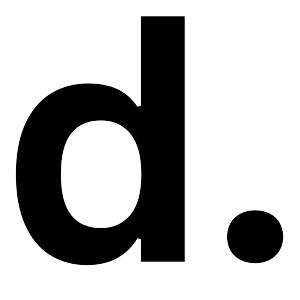How to Validate Your Business Idea: A Systematic Approach
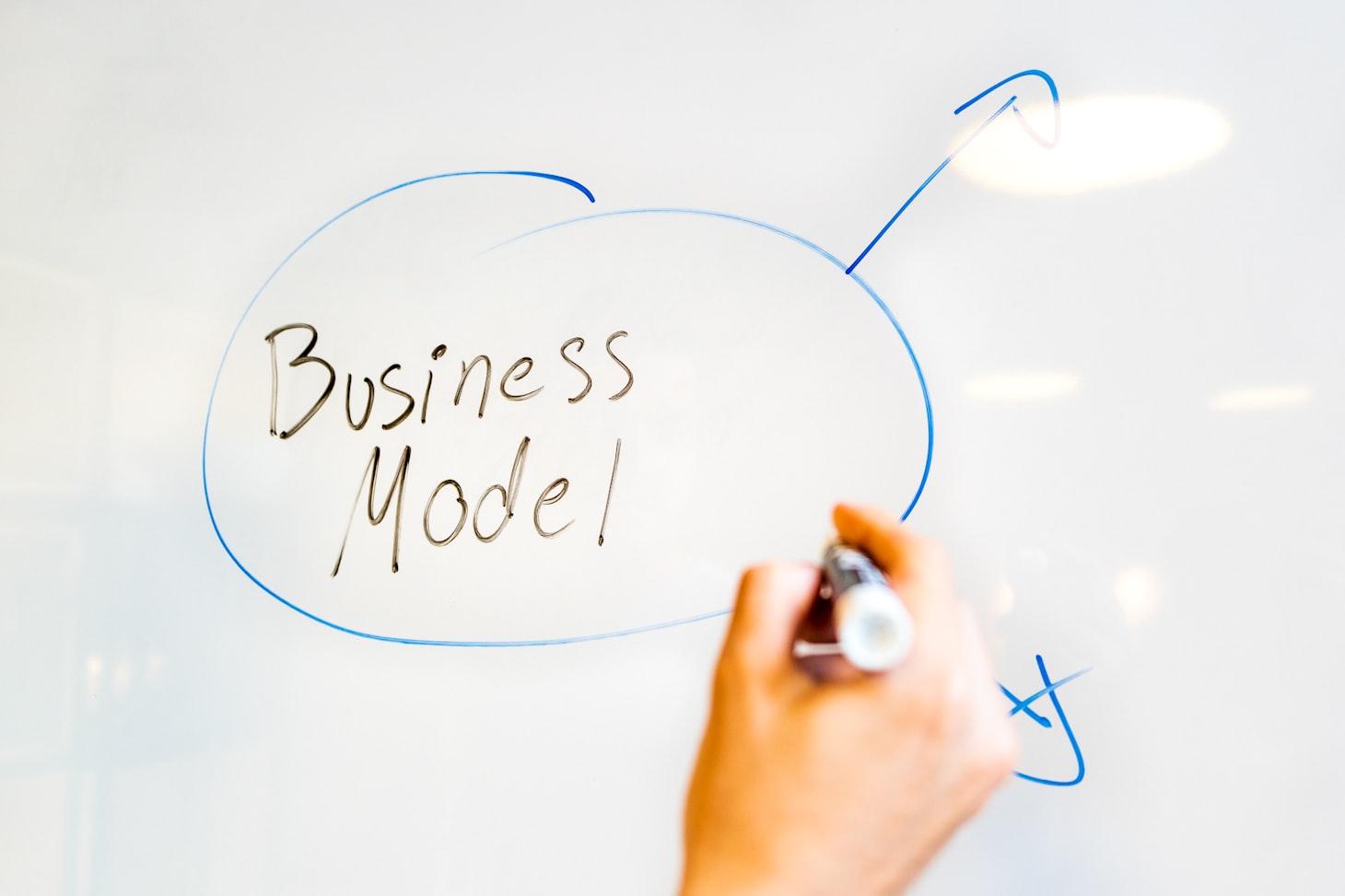
There's a common mistake rookie entrepreneurs make when they're first starting a business…
They start with a product or service idea instead of a problem or need.
Sound familiar?
You’re in the shower and you suddenly think of a cool new service you'd like to offer. You sit down at your computer and start brainstorming how you’ll take it to market. You launch it and start telling everyone in your network.
But nobody signs up. What happened?
Customers don’t care about good ideas. They just want someone to solve their problems.
As an entrepreneur, it's your job to solve the real needs of actual people, not the assumed problems of an imagined demographic. - Gary Schoeniger
Throughout history there have been several evolutions to the process of building a business and validating ideas. Steve Blank illustrated these stages below:
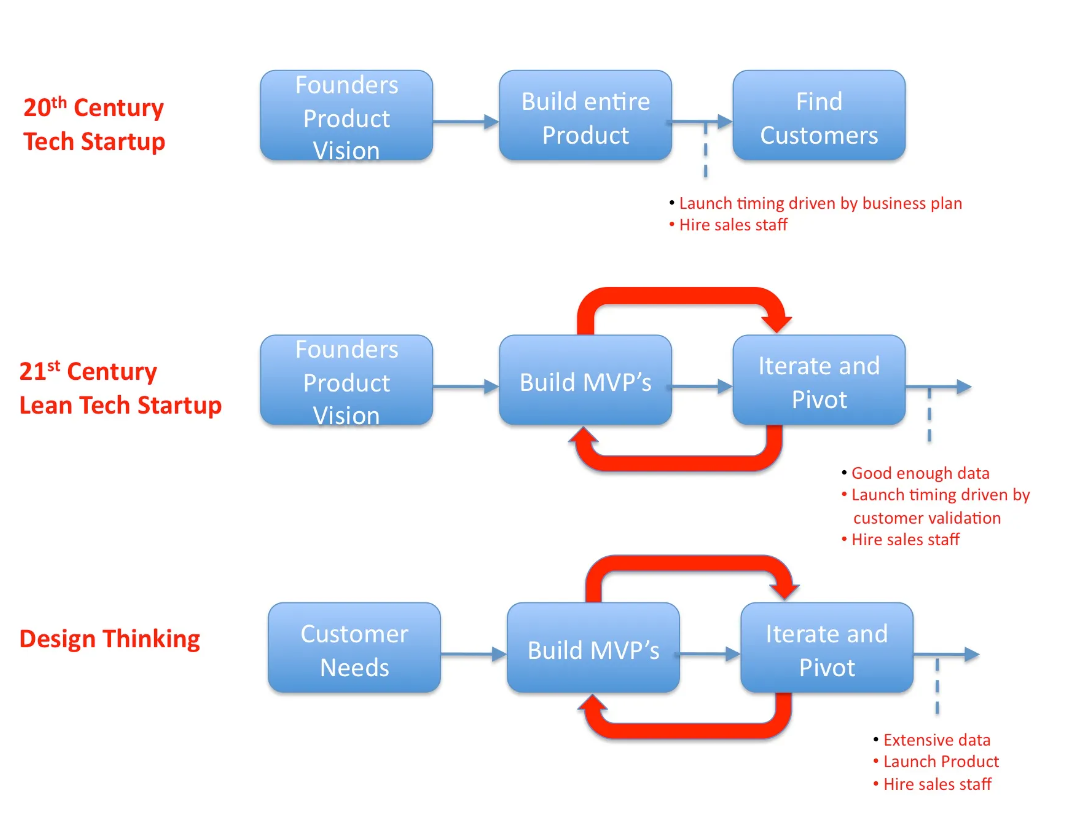
Ditch the first model to avoid wasting time and money on an idea that might flop. A smarter approach is to start testing and gathering feedback in the shortest amount of time on the leanest possible budget.
Does that mean we can test an idea without spending any money? Not necessarily. Running lean experiments and designing MVP's still often require us to invest money to test assumptions and get feedback. The goal is to expend as few resources as possible and avoid taking big risks based on assumptions with little to no data to support them.
So, you've decided to take a lean or design thinking-based approach. How do you actually create a process to validate your business ideas?
The Experiential Learning Process
We start with the basic principles from David Kolb's experiential learning model.
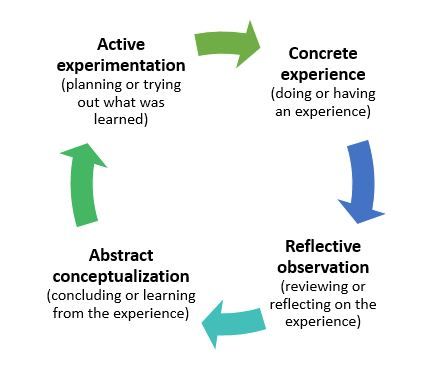
According to Kolb, there are four stages of learning: Concrete Experience, Reflective Observation, Abstract Conceptualization, and Active Experimentation. We can apply these stages to the business model validation process with the Opportunity Discovery Canvas.
The Opportunity Discovery Canvas
To put this into practice, we can follow the Ice House Opportunity Discovery Canvas through three distinct ideation phases:
- Understanding the Problem
- Finding a Solution
- Problem-Solution-Connection
The Opportunity Discovery Canvas created by Gary Schoeniger at ELI is a framework inspired by Steve Blank's original Business Model Canvas. I love this model because it simplifies the steps for validating an idea.
The basic premise is this:
- Document your ideas and general assumptions.
- Get out in the real world and collect feedback from potential customers, industry-related experts, and other relevant sources. This step can also include building MVPs or selling a lean version of your service.
- Refine your idea or pivot based on your feedback collected from the market. This stage becomes a continual loop until you gain traction and positive feedback (often in the form of direct sales).
To get started, we follow boxes 1-9 in the opportunity discovery canvas.
Boxes 1-3 focus on the problem you'd like to solve. The canvas forces you to look at the problem through the market's perspective.
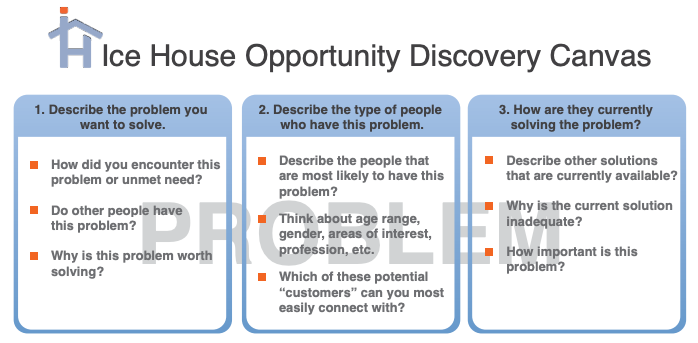
Boxes 4-6 include solution oriented questions designed to test your ideas. This stage requires you to get direct feedback from the market before making assumptions and jumping to conclusions.
Here's where you start conducting interviews with your target market, completing research, pre-selling a service, or building an MVP.
At this stage, entrepreneurs start to see holes in their idea, uncover unexpected obstacles, etc. This phase begins the cycle of idea iteration and small pivots.
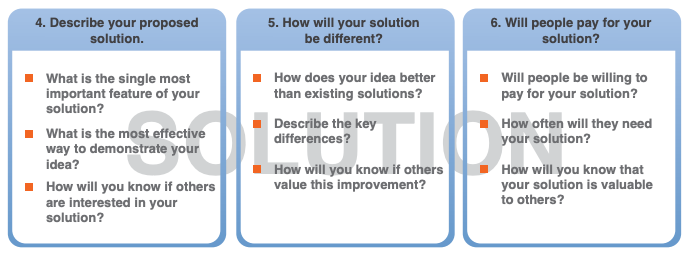
Boxes 7-9: After feedback and potentially several pivots or revisions to your idea, you'll have gathered enough data to move forward or scrap the idea all together.
If you've worked through boxes 1-6 and your idea still seems promising, it's time to consider how you'll reach a larger market and develop a process for finding customers.
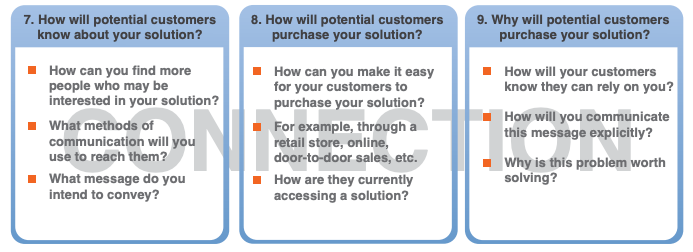
Next Steps
You've made it all the way through the canvas. Now what? The opportunity discovery process ends when you:
Decide to kill your idea because your assumptions were incorrect.
Or...
You've seen traction after several pivots and iterations and people have started to pay for your product or service.
Download your own copy of the opportunity discovery canvas to get started.
Disclaimer: These are not my original ideas. The Opportunity Discovery Canvas was developed by Gary Schoeniger and the team at The Entrepreneurial Learning Initiative.
As an ELI Certified Entrepreneurial Mindset Facilitator, my goal is to spread these concepts with entrepreneurs and aspiring business owners around the world.
Dan's Dispatch Newsletter
Join the newsletter to receive the latest updates in your inbox.
